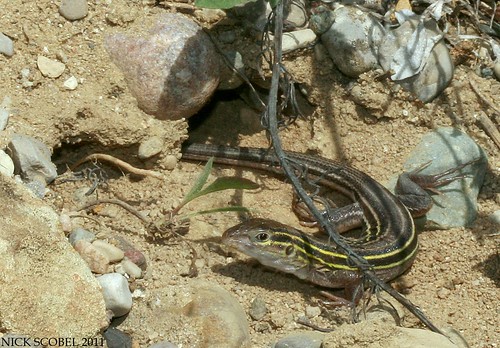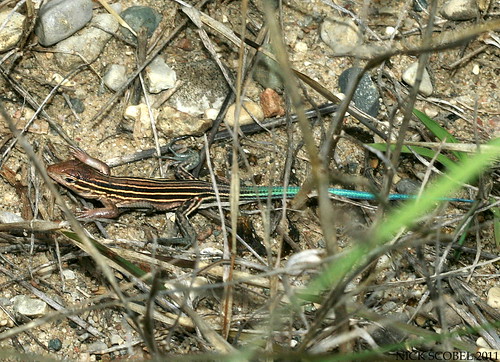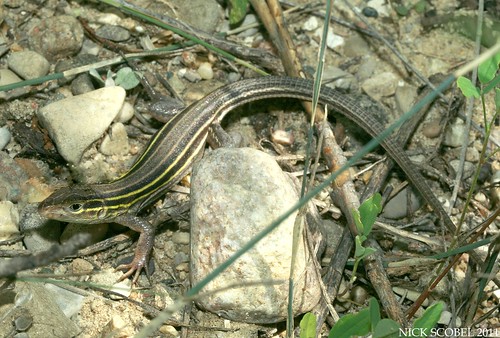Prairie Racerunner - Aspidoscelis sexlineatus viridis
These lizards are quite striking, with adult males obtaining a vibrant green coloration on the head and neck. The researcher explained to me that this species often excavates temporary burrows for cover during the night hours and from inclement weather and predators. We watched this individual for fifteen minutes or so, constantly entering the two entrances to the burrow and kicking out sand with his back feet. I was able to slowly move close enough to get this shot as he had just emerged from the burrow. The researcher explained that they try not to handle the animals by hand as much as possible, and even so it is extremely difficult to capture one by hand. The researcher had to take off but allowed me to stick around and shoot as many photos as I wanted. I noticed movement all around me within the sand prairie and realized they were all racerunners. I decided to stand still and wait for one to come within distance to fire a few shots as quickly as I could.
Prairie Racerunner - Aspidoscelis sexlineatus viridis
Most of the active animals were juveniles like the one photoed above. They exhibit a characteristic light blue tail which can be lost and regrown, similar to the Five-lined Skink. The racerunners rarely stopped moving for more than a second or two, and it took a lot of patience to get the mediocre shots that I did. I watched one adult which was clearly foraging, as it followed a grasshopper into a small shrub and apprehended it. I tried to snap a shot of the order but the lizard moved to fast for me to get a clear shot. I noticed a beautiful adult male later on which escaped before I could fire a photo, but I did get the chance to get within range of this adult female for the best shots I took all day.
Prairie Racerunner - Aspidoscelis sexlineatus viridis
Here you can see the characteristic black and yellow striped on the dorsum of the racerunner. Juveniles lose the blue coloration of their tails as they age. Racerunners prefer hot, dry conditions and are only active during the warmest parts of the year in Michigan, usually between May and August. The Michigan population is disjunct from the racerunners recognized range, and it is unclear whether or not it is a relict native population or if it is introduced. Continuing research is trying to determine this issue and to better understand the racerunner's ecology in Michigan in order to better manage it in the future.





No comments:
Post a Comment